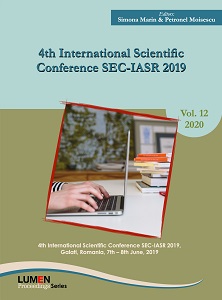An Integrative Approach to Teaching Continuous and Perfect Tenses in English
An Integrative Approach to Teaching Continuous and Perfect Tenses in English
Author(s): Antoanela Marta Mardar
Subject(s): Educational Psychology
Published by: Editura Lumen, Asociatia Lumen
Keywords: Aspect; duration; progress; temporariness; result;
Summary/Abstract: The appropriate use of tenses in English is agreed to be one of the most problematic aspects with which Romanian speakers of English have to cope when trying to communicate correctly and effectively in this language. Some problems are related to formal aspects, i.e. to aspects which imply combining the grammatically correct forms of the elements making up tenses in English (auxiliary and main verbs). Nevertheless, not few are the problems related to semantic and stylistic aspects, i.e. to aspects which condition tense choices depending on the types of actions to be expressed and on the speakers’ need to stylistically mark the messages conveyed (modality).When teaching tenses in the continuous and perfect aspects in English, the two types of problems mentioned above may be avoided if the formal and semantic matrixes specific to these tenses are used. Some might argue that young and teenage learners of English are likely find such formal and semantic matrixes rather abstract and might be unable to further apply them in similar contexts. Nonetheless, the present paper will demonstrate that a gradual and adapted approach to the formal and semantic aspects obviously shared by the continuous and perfect tenses in English may prove useful and effective, irrespective of the students’ age and level of linguistic competence. Once understood and extensively practised, the two matrixes need to be appropriately evaluated in order to ensure long-term results.
Book: 4th International Scientific Conference SEC - IASR 2019
- Page Range: 199-208
- Page Count: 9
- Publication Year: 2020
- Language: English
- Content File-PDF

